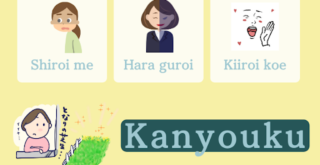
Are you wondering how to speak Japanese more fluently? Some of you may know basic Japanese phrases but lack the confidence to speak fluently. In this article, we have compiled some of the secrets to improving your Japanese conversation skills. We will introduce tips for Japanese conversation and practical ways to develop your speaking skills. Read to the end and you will know how to improve your Japanese conversation skills!
Contents
1. let’s learn Japanese conversation tips

Here are Japanese conversation tips!
From here, we will introduce practical approaches to improving your conversational skills. Here are three key points.
- Learn situational greetings
- Master common everyday phrases
- Learn fillers that connect conversations naturally
In the following, we will explain them one by one!
1-1. Learn situational greetings

The first tip for Japanese conversation is to learn situational greetings. Greetings are an indispensable part of starting a conversation. Let’s learn to use Japanese greetings according to the situation. In this article, we will focus on different greetings depending on the time of day.
Example 1: Morning greeting (Ohayo Gozaimasu)
“Ohayo gozaimasu” is a greeting used in the morning. The casual shortened version is “Ohayo”. Basically, it is said in the morning, but “Ohayo gozaimasu” may be said at any time of the day when someone wakes up from sleep. For example, a person who takes a nap and wakes up at 4:00 p.m. may also be greeted with “Ohayo”. Therefore, it is a relatively versatile greeting.
Example 2: Lunchtime Greeting (Konnichiwa)
“Konnichiwa” is basically a greeting used during the daytime. It is not tied to a specific time of day and can be used in the greatest number of situations. For example, Internet articles that are read by an unspecified number of people at any given time often begin with “Konnichiwa”. It is also considered by many to be a little formal, so it is not often used among friends.
Example 3: Evening greeting (Konbanwa)
“Konbanwa” is a greeting used at night. Note that this greeting is tied to the evening hours, so it can be used in fewer situations than “Ohayo” or “Konnichiwa”. Like “Konnichiwa”, it is a bit more formal and is often not used with close friends. You will probably hear it on the evening news or nighttime radio.
These three are the basic greetings in Japanese. Practice saying them out loud and moving your mouth as many times as you can. To use them at different times and in different situations, you must practice them.
1-2. Mastering common everyday phrases (basic Japanese phrases for speaking)

Next, the second tip for Japanese conversation is to master common everyday phrases. In this article, we will introduce three that are essential for communication.
Example 1: Thank you (Arigatoo, Arigatoo gozaimasu)
“Arigatoo” is used in close relationships, and “Arigatoo gozaimasu” is used when being polite. It is a relationship like the one between “Ohayo” and “Ohayo gozaimasu” mentioned earlier. When something is done for you, doesn’t it make you happy just to be able to say thank you? Please try using “”Arigatoo” in various situations.
Example 2: Please (Onegaishimasu)
“Onegaishimasu” is basically an expression used when requesting something. For example, when handing something over, it can be accompanied by “Kore onegaishimasu,” or when meeting someone for the first time, it can be concluded with “Korekara yoroshiku onegaishimasu”. This phrase gives a polite and warm impression, so please try adding it in various situations.
Example 3: Excuse me (Sumimasen)
“Sumimasen” is the most common of the three. It can be used to express apology, or to express gratitude with a mixture of “I’m sorry” and “thank you”. Since these words are very common to hear in daily life, it is recommended to try to guess from the context what meaning they are used for.
These three are arguably the most useful phrases when communicating in Japanese. WeI would be happy if you could practice them as your first Japanese phrases, even if you are at an introductory Japanese level.
1-3. Learn fillers that connect conversations naturally

One of the things you worry about in Japanese conversation is that you might lose track of the conversation. Here are three fillers to help you keep the conversation moving.
Example 1: That’s right (Soudesune)
“Soudesune” means to affirm what the other person has just said once. It gives the impression of accepting the other person’s words for a moment while thinking about what to say next. Of course, “Soudesune, demo” can also be used to express an opposing or supplementary opinion, making it an easy filler to use.
Example 2: Well (eeto)
“eeto” is a connective when you are thinking about what you are going to say next. It is especially used when you are thinking about the episode you are going to talk about. You are thinking about what you are going to talk about.
Example 3: Um (ano)
Extending “ano” or “ano~” is another connective word when you are thinking. Unlike “eeto”, this is used when you have already decided what you are going to say. This is a filler when you have already decided what you want to say, but are wondering how you should say it.
These are things that come up on the spur of the moment if you are a Japanese speaker, but may be difficult for learners to get used to. However, the advantage of fillers is that they convey to the listener that you are thinking at the moment, so please try them little by little.
2. Improve Japanese speaking skills through practice (improve japanese speaking skills)

Now that you have practiced the various inputs of Japanese, don’t you want to try outputting your Japanese in actual conversations? Here are some ways to improve your Japanese speaking skills through practice.
- Find a language exchange partner
- Use Japanese audio and video content
- Actively create opportunities to speak Japanese
These three methods will be explained here!
2-1. Finding a language exchange partner

First, we will show you how to find a language exchange partner and how to proceed with an effective language exchange.
Example 1: Using an online language exchange site
The easiest way to find a language exchange partner is through an online language exchange site. You can connect with Japanese speakers from all over the world, and they have by far the largest number of participants. Some sites are free, so the hurdle is probably low.
Example 2: Joining a local Japanese language study group
After all, you want to talk face to face! If that is your preference, we recommend joining a local Japanese study group. You can search online for a group near your home that you can easily attend. You can find more details in this article.
↓↓↓
https://ohanasikagawa.com/japanese_language_near_me
Example 3. Leverage your social networking connections
If you search on Instagram or Facebook using hashtags, you could meet Japanese English learners who are looking for international exchange. While it can be difficult to choose who to partner with in other ways, the advantage of this method is that you can connect with the people you want to connect with.
To make the language exchange effective, we recommend that you be aware of active listening and that you take notes while listening. Active listening is to listen proactively rather than passively. Try to listen while thinking about what the other person is trying to say and asking questions that get to the essence of what he or she is trying to say. It is also important to take notes so that you do not forget any new words or phrases you learned during the language exchange. It is good to bring back as much learning as possible.
2-2. Let’s use Japanese audio and video content

Next, we will explain how to improve your listening and speaking skills by utilizing Japanese audio and video content.
Example 1: Watching Japanese TV dramas and movies
To learn how the vocabulary and grammar you have learned are used, we recommend watching Japanese dramas and movies. Subtitles can be added, so you can enjoy the level up by watching them with subtitles in your native language at first, then with Japanese subtitles, and finally trying them without subtitles.
Example 2: Listening to Japanese podcasts
If you want to make the best use of your spare time, Japanese-language podcasts are a good choice. You can study during your commute to work or school, or during your household chores. Even if you have just started learning Japanese, you will learn more quickly if you are familiar with the rhythm and intonation of the Japanese language.
Example 3: Follow Japanese language channels on YouTube
If you want to experience Japanese while enjoying your hobby, why not follow Japanese language channels on YouTube? Of course, commentary channels for Japanese language learners are great, but if you choose a channel based on your own hobby, such as a live game or fishing channel, it will be easier to continue.
2-3. Proactively create opportunities to speak Japanese

Finally, we have compiled a list of activities and ways to create an environment that will increase opportunities to speak Japanese.
Example 1: Hold meetings and presentations in Japanese
If you have opportunities to use Japanese at school or work, it is effective to hold meetings or presentations in Japanese. This is a chance to practice your formal Japanese, so take advantage of it.
Example 2. deepen your interaction with Japanese-speaking friends and colleagues
If there are Japanese speakers at your workplace or you have Japanese-speaking friends, it is recommended that you deepen your interactions with them. If you speak to them in Japanese, they will probably be happy to hear from you.
Example 3: Participate in Japanese events and communities
If you don’t have the opportunity to use Japanese at work or school, or if you don’t know any Japanese speakers, try participating in Japanese events or communities. With online events, you can access the Japanese community from anywhere in the world. For example, Ohanasi Kagawa hosts online one-on-one language exchange events on weekends. Japanese and English learners switch the language they speak every 15 minutes, creating an environment where they can learn and teach each other. Participation is free, so please check out the details of this event.
Summary
To improve your Japanese conversation skills, it is important to learn phrases used in daily conversation, practice with language exchange partners, and use audio and video content to improve your listening and speaking skills. Proactively create opportunities to speak Japanese and build your confidence through practice!
【For Japanese Learners】 Limited to 10 people Free Consultation & Japanese Lesson

We are organizing a free Japanese language consultation & free Japanese lesson for Japanese learners.
- “Even though I’m studying Japanese, I can’t speak it.”
- “I don’t know how to study Japanese.”
- “I’m worried that I can’t see any progress.”
Our Japanese Language Learning Counselors would be happy to listen to the concerns of such beginner- or intermediate-level Japanese language learners and advise them on how to learn Japanese and solutions that suit their needs.
※Due to the limited time of our Japanese Language Counselors, we limit the number of participants to 10.
We at Ohanasi Kagawa are currently hosting an online Japanese-English language exchange event on weekends.
However, we have noticed that there are many people who want to participate but are not confident enough in their Japanese to do so.
We are holding this free Japanese language study consultation in the hope that we can help Japanese learners find hints to help them move forward.
You can book through the calendar below, and we will send you a link for the free counseling by e-mail.
If you’d like to take a Japanese lesson, you can take it for free during this time.
Please feel free to book your appointment first!
↓↓↓
Free Japanese study consultation hosted by Ohanasi Kagawa
We are an international exchange community that holds free online language exchange events on weekends.
More than 2000 people from over 50 countries have participated so far.
For more information about Ohanasi Kagawa, please visit






